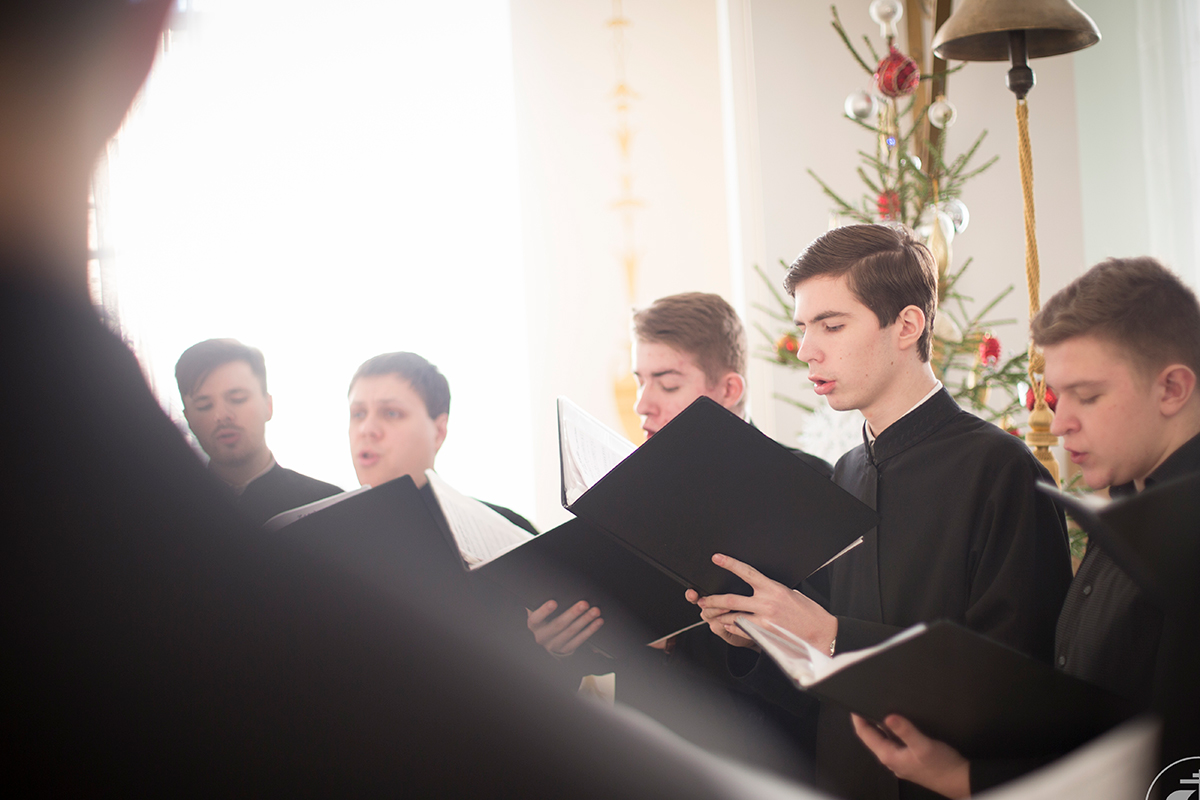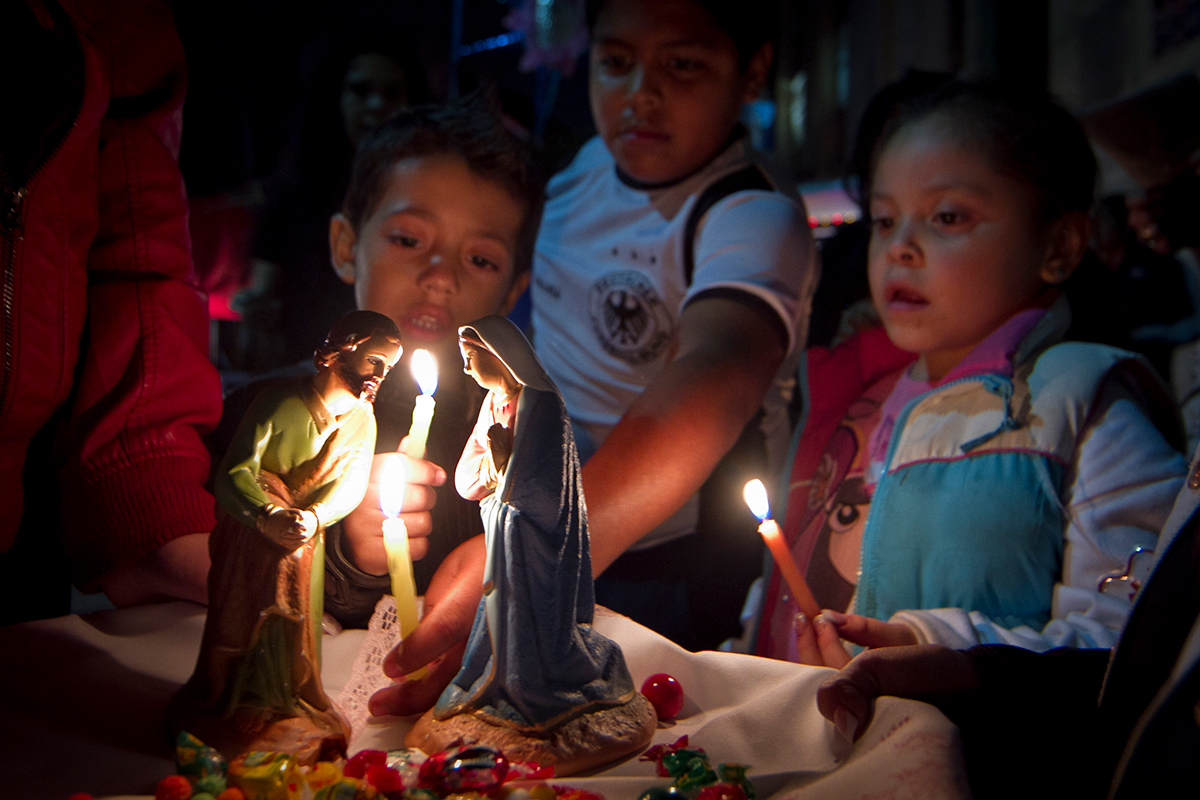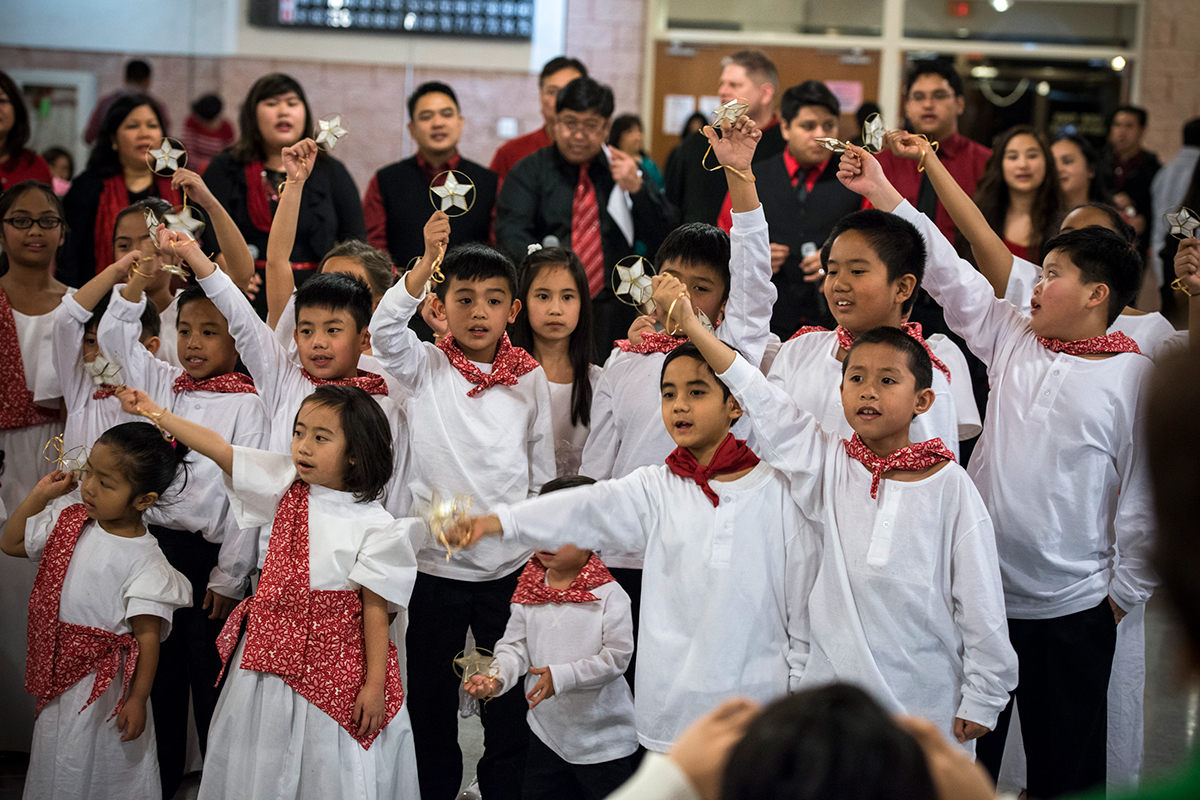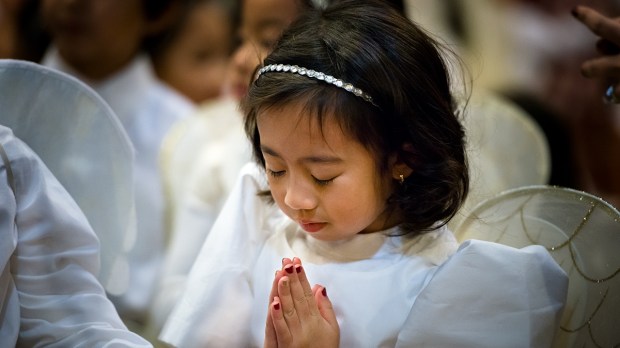In this Fourth Week of Advent – a full week this year, as Christmas Day falls on a Sunday – prayerful preparations for the Nativity are underway around the Catholic world. Here we spotlight three favorite customs, representing the monastic tradition and customs from Mexico and the Philippines.

The O Antiphons: Calling the Messiah by name
When we sing the Advent hymn “O Come, O Come Emmanuel,” we’re drawing on a monastic prayer tradition from as early as the 8th century, one that continues today in the Liturgy of the Hours. Beginning at Vespers (Evening Prayer) on December 17th and continuing through Vespers on the 23rd, the Church prays a special series of antiphons – the verses recited before the singing of the Magnificat, Mary’s Canticle. Each antiphon calls upon the Lord to come, both now at Christmas and at the end of time, and each uses a symbolic title for him drawn from Old Testament prophecies. Because each invocation begins with the formal term of address “O,” the prayers are known as the O Antiphons.
Reading, praying, and reflecting on the O Antiphons is a great way to travel the road to Christmas. Each of the names by which we urge the Messiah to come is associated with a special kind of longing, a desire for the One who saves us. Follow our reflections on the antiphons, beginning with O Wisdom, or come up with your own in poetry, art, or music. In spirit, join the monks in their candlelit winter chapels, chanting their way to Christmas.

Las Posadas: Accompanying Mary and Joseph to Bethlehem
Mexican and Mexican-American Catholics prepare for Christmas with a custom that is 600 years old. Las Posadas (Spanish for “the inns”) is a 9-day processional novena that begins on December 16th and concludes on Christmas Eve. Based on the Nativity story in St. Luke’s Gospel and rooted in the missionary custom of dramatizing Bible stories for Aztec converts who could not read, Las Posadas acts out Joseph and Mary’s search for shelter in Bethlehem. Each night of the novena, a different home or church represents an inn. Everyone goes in procession to the “inn,” led by a lantern bearer and Mary and Joseph (adults or children dressed as the Holy Family or carrying figures representing them). Sometimes other characters and animals join the procession. As they go, they sing special carols.
When the “inn” is reached, the Holy Family sings a request for shelter to the “innkeeper” (the host of the night’s celebration), who initially denies them room. After more desperate pleas, the innkeeper relents and invites the pilgrims – Mary and Joseph and the crowd accompanying them – inside for prayers, songs, and refreshments, typically champurrado (a hot spiced beverage made from ground corn and chocolate) and pan dulce (sweet bread). A star-shaped piñata filled with treats is broken open by the children. In parts of the United States where the weather is too cold to journey outdoors, Los Posadas takes place indoors in a church, school, or community center. Family-owned Mexican restaurants often offer Las Posadas parties at this time of year.
Join a Posadas procession if one is being celebrated in your area, and think about how you can offer hospitality to those in search of shelter at Christmas.

Simbang Gabi: Gathering in the darkness
Catholics in the Philippines have celebrated their own pre-Christmas novena for 600 years. Simbang Gabi (Tagalog for “Night Mass”) is a series of nine Masses traditionally celebrated in the pre-dawn hours each day from December 16 to December 24. The custom began as a way of accompanying Mary symbolically in prayer through the 9 months of her pregnancy. The Masses were so popular that they were often celebrated outdoors, or in churches with the doors left open to accommodate the overflow crowds. At the time most of the Filipino people worked as fishers or in the rice fields, where work began at dawn. They would come to the novena Masses in the evening exhausted and hungry. So priests began celebrating the novena Masses before sunrise, followed by a communal meal of special rice dishes – because most people contributed rice, instead of money, to their parishes.
Church bells rang about 3:30 in the morning, and people would make their way to church in darkness, their way lighted only by parols, the traditional star-shaped Christmas lanterns carried or hung along the route. (Another name for Simbang Gabi is Misa de Gallo, Spanish for “Mass of the Rooster,” because the rooster would crow about the time they left home.) In the plaza of the church, bands played Christmas songs as the people gathered for Mass.
Today in the Philippines Simbang Gabi is still celebrated in the pre-dawn hours, but instead of a church-sponsored meal there are food vendors selling the rice treats. In the United States, where Filipino-American Catholics celebrate Simbang Gabi in many cities, the novena of Masses usually takes place in the evening to accommodate contemporary work schedules. Various parishes and Filipino organizations take turns hosting the nine Masses and the receptions that follow. Churches are decorated with parols, which are carried in the entrance procession.
Attend a Simbang Gabi Mass if the novena is held in your diocese. Or try getting up before dawn on one or more of the days before Christmas to pray a decade of the Rosary and accompany Mary on her journey.
Come, let us go forth singing
Beautiful hymns
For God is love.
Come, let us go forth singing,
While the world is silent . . .
(from the English lyrics for Ang Pasko ay Sumapit [Christmas Is Here], popular Tagalog carol)

